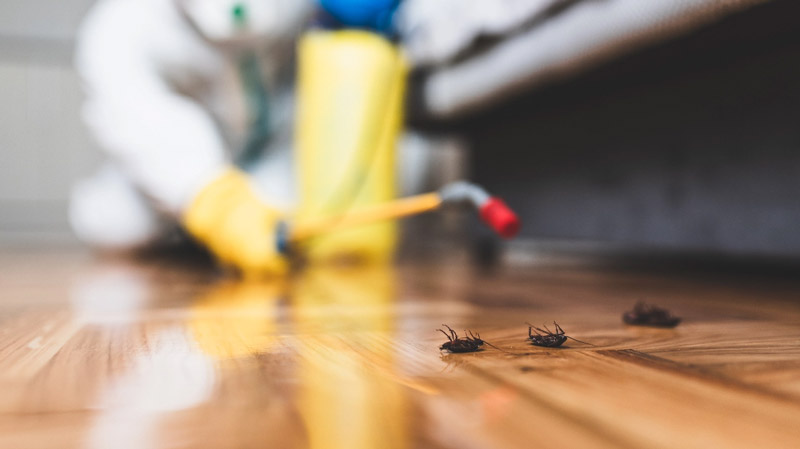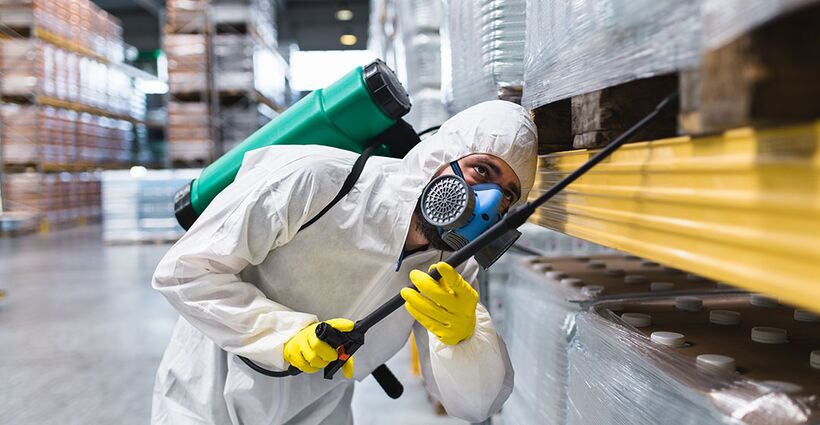Exploring Infestation and Treatment Techniques worldwide of Parasite Control
The landscape of parasite control encompasses a myriad of difficulties, particularly as infestations of usual family pests continue to progress. Recognizing the behaviors and reproductive patterns of these problems is crucial for establishing efficient treatment strategies. By integrating preventative measures with sophisticated management methods, such as Integrated Bug Management (IPM), house owners can better secure their atmospheres. The efficiency of these approaches might differ significantly based on certain circumstances. What hidden factors add to the success or failure of these techniques in various setups?

Usual Home Pests
When it involves managing our home, comprehending usual house pests is critical. These insects not only disrupt our convenience yet can additionally position health threats and damages property. The most common home parasites consist of ants, roaches, rodents, termites, and bed bugs.
Ants, commonly seen foraging in kitchens, can contaminate food and establish big swarms. Cockroaches, understood for their durability, can activate allergies and spread pathogens. Rodents, including mice and rats, can trigger structural damages and bring illness like hantavirus and salmonella. Termites, typically referred to as "silent destroyers," can jeopardize the integrity of wood frameworks, causing expensive repair work. Bed bugs, although not illness service providers, can trigger substantial discomfort via their attacks and bring about emotional distress.
Recognizing the indicators of these insects, such as droppings, nests, or attack marks, is important for very early treatment (Pest Control Lockhart). Appropriate sanitation practices, securing entry points, and maintaining a clutter-free environment work preventative procedures. By determining these typical house bugs and understanding their actions, home owners can take proactive actions to reduce invasions, guaranteeing a healthier living setting
Recognizing Insect Infestations
Insect invasions can escalate swiftly, transforming a small aggravation right into a substantial issue if not attended to immediately. Usual factors contributing to infestations include inadequate sanitation, architectural susceptabilities, and seasonal changes that drive insects inside.
Recognizing the kind of pest is important, as various varieties show different behaviors and reproductive rates. Rodents may develop nests in covert locations while insects like roaches flourish in damp environments. Early discovery often depends upon identifying indicators such as droppings, gnaw marks, or unusual noises, which can suggest a problem prior to it becomes extreme.
Warm, moist environments can help with the quick development of parasite populations, while modifications in landscape design or building can inadvertently develop conducive settings. An enlightened method to comprehending these characteristics lays the groundwork for efficient parasite monitoring methods in the future.
Treatment Techniques and Techniques
Reliable therapy methods and methods are essential for minimizing bug invasions and recovering a secure atmosphere. A complex method is commonly best, integrating chemical, biological, and mechanical strategies customized to the specific parasite and the seriousness of the infestation.
Chemical treatments include making use of pesticides and herbicides, which can effectively get rid of insects. However, proper application and adherence to security standards are important to lessen risks to human beings and non-target microorganisms. Integrated Pest Monitoring (IPM) encourages the wise use chemicals as a last hope, depending rather on surveillance and limit degrees to identify intervention needs.
Organic control approaches involve presenting all-natural predators or bloodsuckers to reduce insect populations. This approach is significantly prominent, particularly in farming setups, as it advertises environmental sustainability.
Mechanical methods, such as traps and barriers, give instant alleviation from bugs without introducing chemicals. Choices include sticky traps for pests or physical barriers for rats.
Ultimately, the choice of treatment method should think about the certain parasite, the setting, and potential influence on human wellness and ecosystems. A balanced combination of these techniques can properly handle infestations while promoting lasting bug control options.
Safety Nets for House
Proactively attending to bug issues before they escalate is essential for preserving a healthy home setting (Pest Control Lockhart). Applying efficient safety nets can dramatically reduce the possibility of problems, inevitably protecting both your property and wellness

Proper landscape design also plays a critical role in prevention. Keeping shrubs and trees trimmed away from your house lowers the opportunities of parasites finding their method inside. Guarantee that drain systems are functioning effectively to prevent standing water, which can attract in insects website here and other bugs.
Finally, routine examinations are recommended. Frequently checking for indications of pest task enables early intervention. By taking on these precautionary measures, homeowners can produce an atmosphere that is much less friendly to pests, thus improving their overall top quality of life and minimizing the demand for considerable pest control interventions.
Business Insect Control Approaches
A detailed technique to industrial bug control is essential for organizations aiming to maintain a risk-free and hygienic atmosphere. Efficient strategies involve a mix of regular assessments, worker training, and the execution of Integrated Parasite Administration (IPM) practices.
Normal inspections enable early detection of pest task, enabling timely treatment. Services ought to create a regular schedule for these evaluations, concentrating on risky areas such as kitchen areas, storage space areas, and garbage disposal websites. Employee training is equally critical; personnel should be enlightened on the signs of pest problems and the relevance of reporting them immediately.
Implementing IPM techniques helps alleviate parasite concerns sustainably. This includes habitat modification, such as sealing entry factors and decreasing clutter, along with using natural deterrents prior to resorting to chemical therapies.

Moreover, working together with a qualified bug control service provider makes sure accessibility to specialist knowledge and site advanced therapy choices. This partnership can cause customized bug control plans tailored to the specific requirements of business, minimizing threats and boosting total effectiveness. Inevitably, an aggressive and enlightened method promotes a pest-free environment, guarding both public health and wellness and business online reputation.
Conclusion
To conclude, effective pest control necessitates an extensive understanding of common household insects and their behaviors, coupled with targeted therapy techniques. Executing preventative steps along with therapy techniques such as Integrated Bug Monitoring and organic control enhances the ability to mitigate problems. Routine examinations and a mix of Your Domain Name chemical and mechanical options additionally contribute to maintaining pest-free environments. Ultimately, a well-shaped approach to pest administration is necessary for protecting living rooms from undesirable intruders.